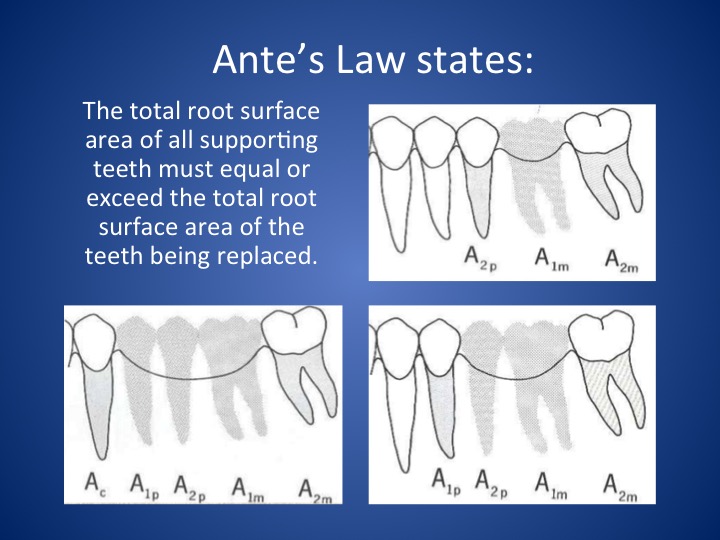Ante’s Law: Update Your Dental Chart To Lower Your Malpractice Risk
This month’s free Update & Alert dental blog post focuses on another “war story” from my everyday legal practice. In it, we discuss how the old rule of thumb Ante’s Law can be used to strengthen your dental chart practices, which will reduce your risk of charting-related malpractice issues.
So without further adieu, here is another real-life example of dental chart issues and the accompanying commentary on how you can avoid legal entanglements before they are filed.
Dentist: General Dentist. This is a pending dental board case.
Situation: The patient appeared for a limited exam and an existing ## 10-14 bridge (## 11, 12 and 13 were pontics) with recurrent carries. It needed to be replaced. The dentist offered options (two individual crown + implants; or, two individual crowns + a RPD) and explained the risks. The patient, however, insisted on a replacement bridge. It was fabricated and seated. Later, #10 snapped off at the gum line after only four months. #10 then was extracted, # 14 crowned and a Valplast partial insert to replace the now four missing teeth.
The patient filed a board case.
[One interesting side bar. In my risk management lectures (available to you in our video library for all ICGS system subscribers), I list the three primary characteristics (as well as four minor ones) of the patient most likely to file a dental-legal action — female; over the age of 45, and employed in a health related field. The complainant here is a 67-year-old, female, physician’s assistant. Had the dentist been an ICGD subscriber, s/he would have seen this coming and could have opted not to capitulate to the patient’s demands.]
The dental board’s chief investigator offered a “preliminary” opinion, that a dentist cannot replace any bridge that violates Ante’s Law. In case you suppressed this dental-school memory, here’s a quick refresher of Ante’s Law.

Some practitioners feel that Ante’s Law is “Ante”-quated, as it was formulated in 1926 when dental materials were much weaker than they are today.
Issue: (1) Can a dentist replace a bridge that violates Ante’s Law, even if s/he did not seat it originally?
According to the Textbook of Orthodontics, the root surface area of the teeth in question is as follows (all measurements in sq. mm):
Abutments
#10 194
#14 533
Total 727
Teeth Being Replaced
#11 282
#12 254
#13 254
Total 790
So, the total root surface area of the abutment teeth approximates that of the replacement teeth, but still violates Ante’s Law. I queried Professor Richard Stevenson, Chair of the Restorative Dentistry section at the UCLA Dental School, about this issue. He believes that as long as the (1) patient is fully apprised of the risks, and (2) span is not unreasonably long (imprecise standard), the standard of care is met.
Charting Pointers: While my client clearly presented the alternatives, I wish s/he had included percentages as well. Here is my suggested dental chart entry (I made up the percentage and years; you would know better than I):
“Pt given options of (1) PFMs ## 10, 14 with implants, or (2) PFMs ## 10, 14 with PRD. Explain ADRA for each. Pt rejects both and only wants replacement bridge due to finances. Told pt bridge is inadequately supported, there is a less than a 25% chance the bridge will last 3 years, the abutment teeth will be compromised, and a bridge failure may cause ## 10 and 14 to be extracted. Pt fully understands risks, but wants to proceed anyway.”
I feel that when less-than-ideal dentistry is performed, one must explain and document two critical concepts in his or her dental chart: (1) the decreased odds vs. those of a standard procedure, and (2) the possible negative consequences of doing so (i.e., the condition may be made worse — here losing ## 10 and/or 14.).
Of course, a dentist can always refuse to proceed. After all, you are the captain of the ship.
As always, reach out to me personally if you have any questions or insights to share with your fellow subscribers on this or other topics.
Subscribe to access even more exclusive content
Comments are closed.







